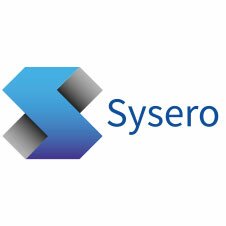Sysero: Low-code vs no-code – Which is better for law firms?
Gartner predicts that within the next three years, 70% of new applications developed by organisations will use low-code or no-code technologies, up from less than 25% in 2020.
The rapid rise in low-code and no-code technologies is a game changerfor the modern law firm, paving the way for more agile, efficient, and profitable ways of working. While early adopters are already reaping the benefits, there’s still uncertainty about these emerging technologies and how best they can be used within the legal environment. Here, we break down the basics around low-code and no-code and examine which one is best suited for today’s law firms and legal professionals.
What is no-code?
As the name suggests, no-code platforms negate the need for any coding skills. They enable non-technical users to quickly and easily build applications using a visual-based, drag-and-drop editor that doesn’t require any additional coding. This means that lawyers and staff can create new applications without requiring any additional assistance from IT.
Pros:
- Since absolutely no coding is necessary with no-code platforms, they offer an ideal solution for simple applications or workflows that require fast implementation.
- Anyone within the firm can quickly create and start using an application without asking for help from your internal IT team.
- Additionally, these flexible platforms help reduce the costs of traditional development by putting the power of creation in the hands of lawyers and staff.
Cons:
- The simplicity of no-code platforms are also their downfall. More often than not, law firms need to be able to customise applications or workflows to suit edge cases. Yet, no-code platforms leave little to no room for lawyers or staff to make changes.
- This can lead to dangerous shadow IT, as users try to find not-so-secure workarounds, which can open your firm up to security and compliance issues.
- Additionally, no-code platforms can only be integrated with other legal IT systems based on what’s currently available in the software.
What is low-code?
Low-code platforms combine no-code and manual coding. These flexible platforms deliver up to 95% of the functionality within the standard product, but also provide methods of embedding coding to add business logic at key points within an application. For example, low-code platforms still use visual designers and drag-and-drop elements, making it easy for non-technical users to build applications. However, developers can add logic using standardised scripting languages such as SQL, Javascript and PowerShell, to ensure that applications work in the exact way that lawyers and staff need them to work.
Custom logic can be added in four areas:
- Form logic: User inputs can be modified using logic captured in online forms.
- Process logic: Complex decision blocks can be added as part of a process.
- Integration logic: Typically retrieving data from external systems.
- API Logic: The ability to start business processes from third party applications.
Pros:
- Just like no-code, low-code platforms provide lawyers and staff a fast, easy way to create custom applications and workflows.
- However, low-code platforms can be built for multiple use cases or manage edge cases by extending the platform with custom code.
- With low-code platforms, you can incorporate built-in security processes, data policies, and compliance best practices.
- Low-code platforms allow you to easily integrate your applications with other core IT systems, such as case management or document management.
Cons:
- Even though low-code platforms are based on simplicity, they still require some additional support from either the platform supplier or internal IT.
Which is better for law firms?
Clearly the no-code/low-code movement is a trend that can transform the legal sector – but which one should your law firm choose? When it comes to legal technology, it needs to suit the exact requirements of the firm. The legal sector is one where each firm is defined by its own unique processes – and the right technology will support those processes, not hinder them.
Using no-code platforms within legal can be quite simple, yet also incredibly limiting. Take for example, using a no-code platform to automate client intake. Each firm has a clearly defined process for conducting KYC checks and onboarding new clients. If you were to use a no-code platform to build a KYC application, you would be limited to the due diligence processes offered within the platform. However, using a low-code solution, you would still be able to visually design your KYC workflow, yet also customise your KYC procedures to suit your firm’s unique requirements.
When it comes to the no-code vs. low-code argument, the former may be too simplistic to solve the complex challenges faced by the modern law firm. Low-code platforms offer the same flexibility and agility as no-code platforms, with the added ability to customise when required. Most low-code platforms can be edited using commonly used scripting languages, such as SQL, PowerShell, or JavaScript, making it easy for your internal IT team to customise solutions. Moreover, low-code platforms give you greater flexibility to integrate with other internal systems, providing you with a more holistic automation system.
With a low-code solution like Sysero, you can have the best of both worlds by providing a visual, no-code interface to end users, while being able to quickly customise applications for certain use cases. At the end of the day, your lawyers are subject matter experts, not computer programmers. Yet, at the same time, you need to account for the flexibility to support edge cases to ensure the long-term usability of your platform. Opting for a low-code solution is the only way to empower your lawyers and staff to create solutions for themselves that support the unique way your firm operates.
To learn more about Sysero’s low-code solutions and how they can benefit your firm, please get in touch with us.



